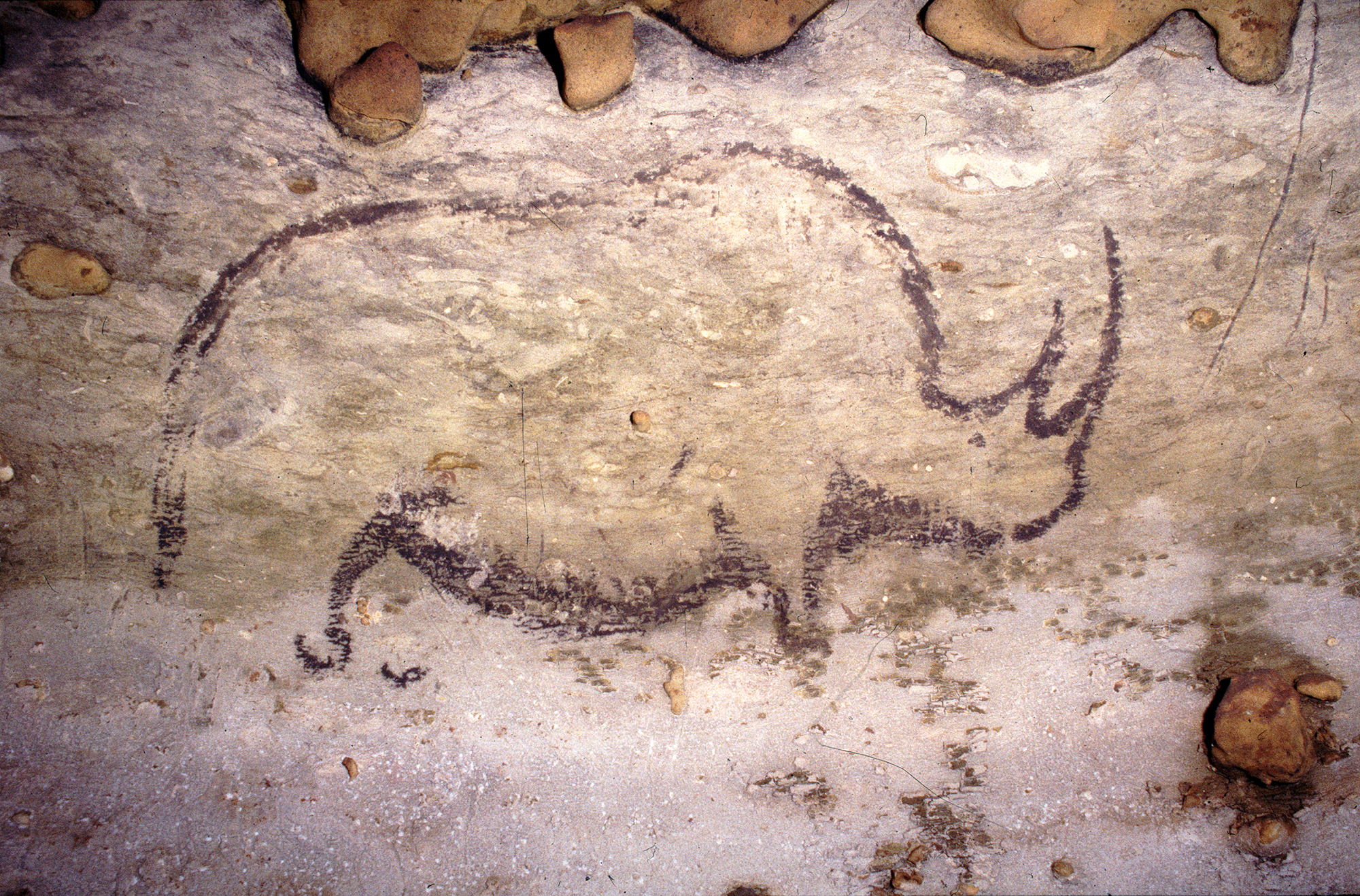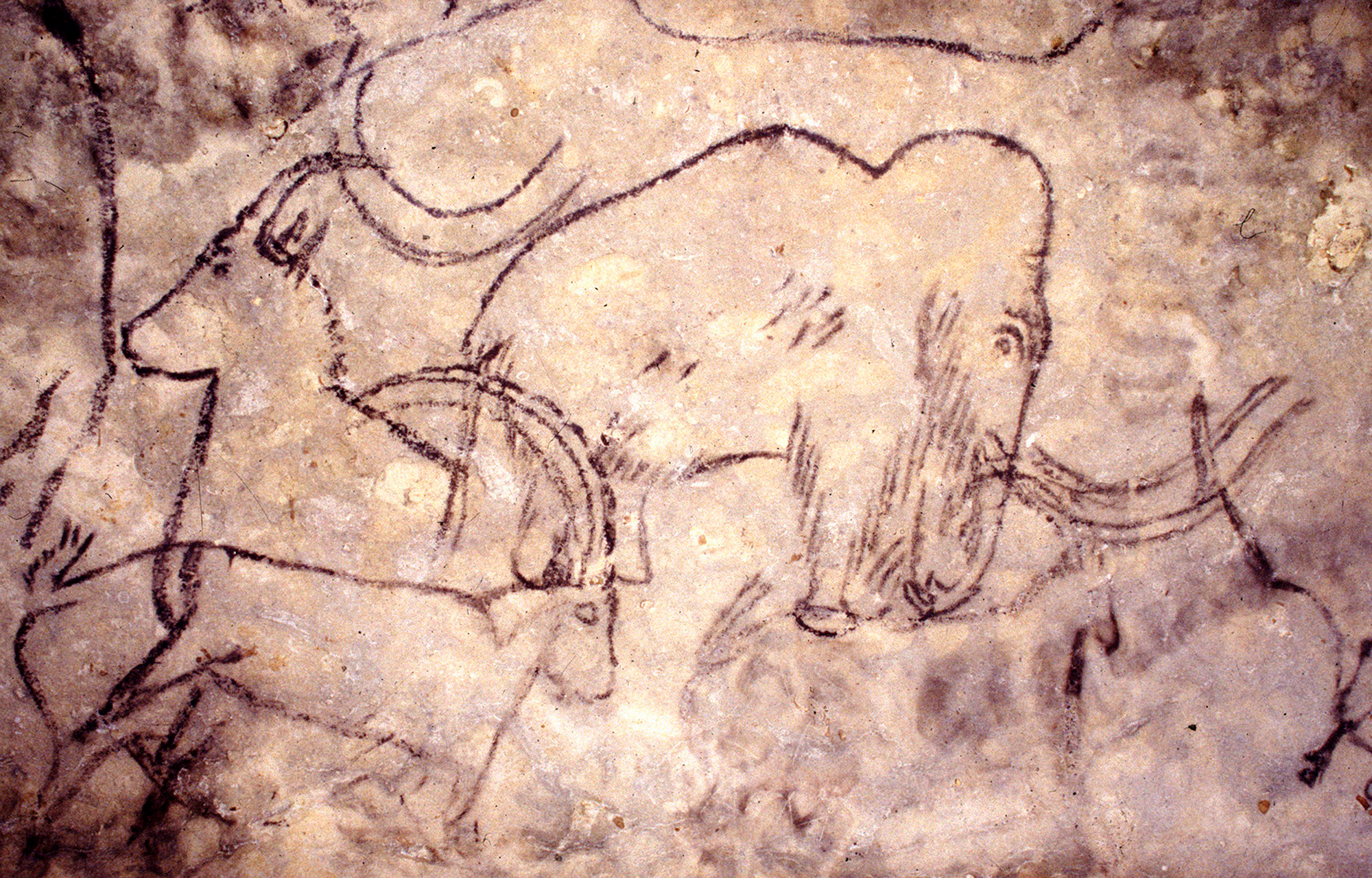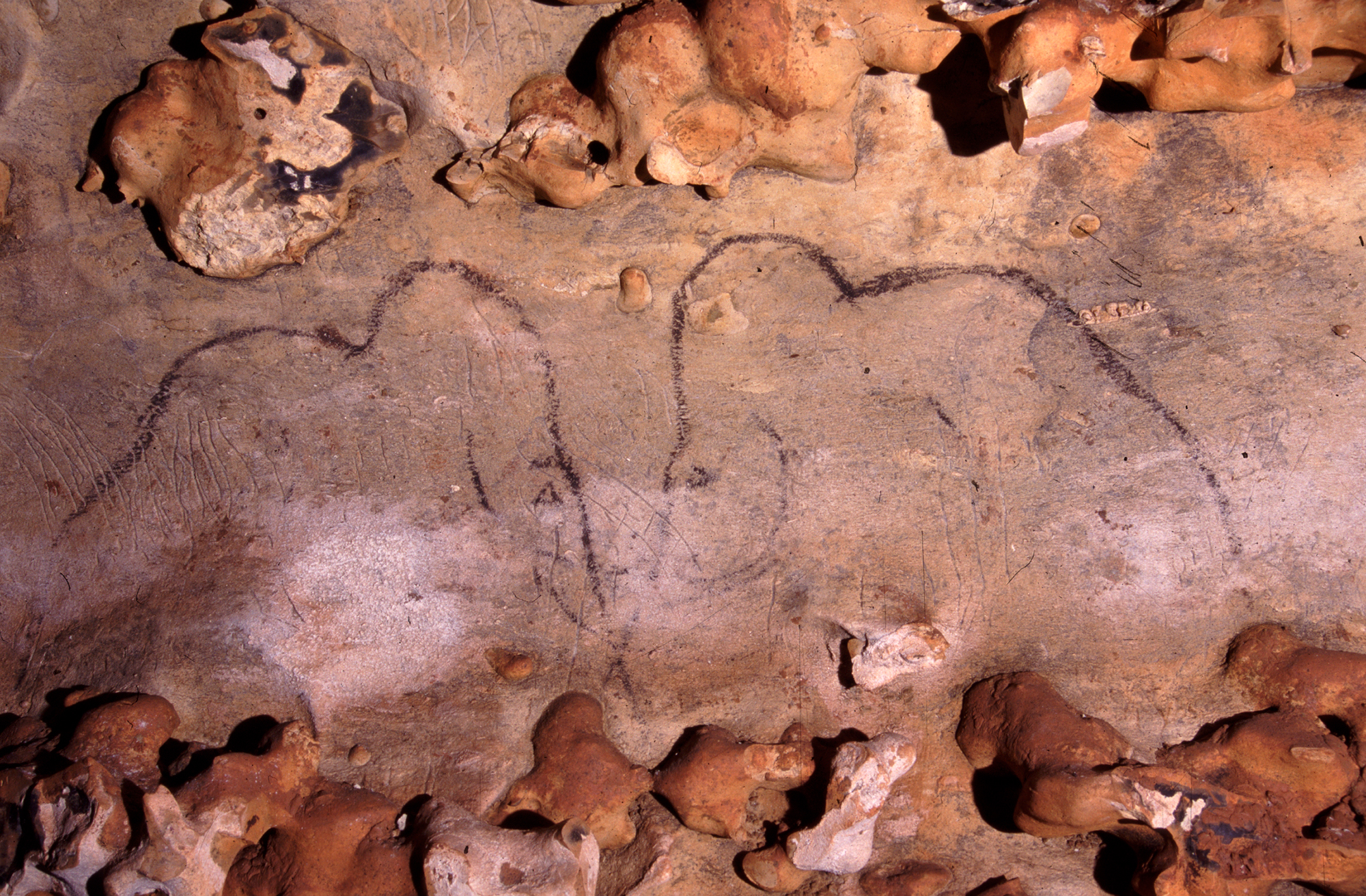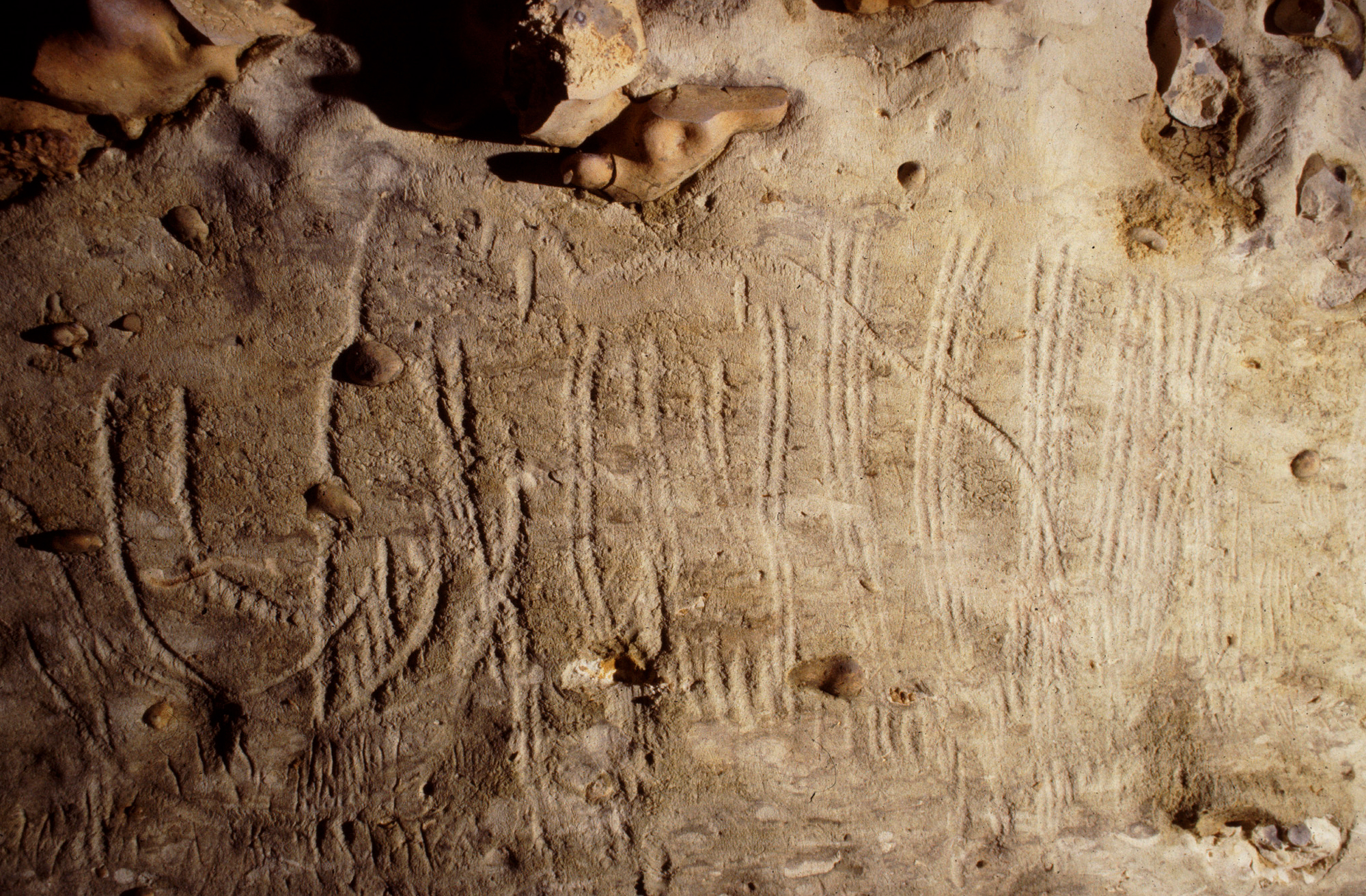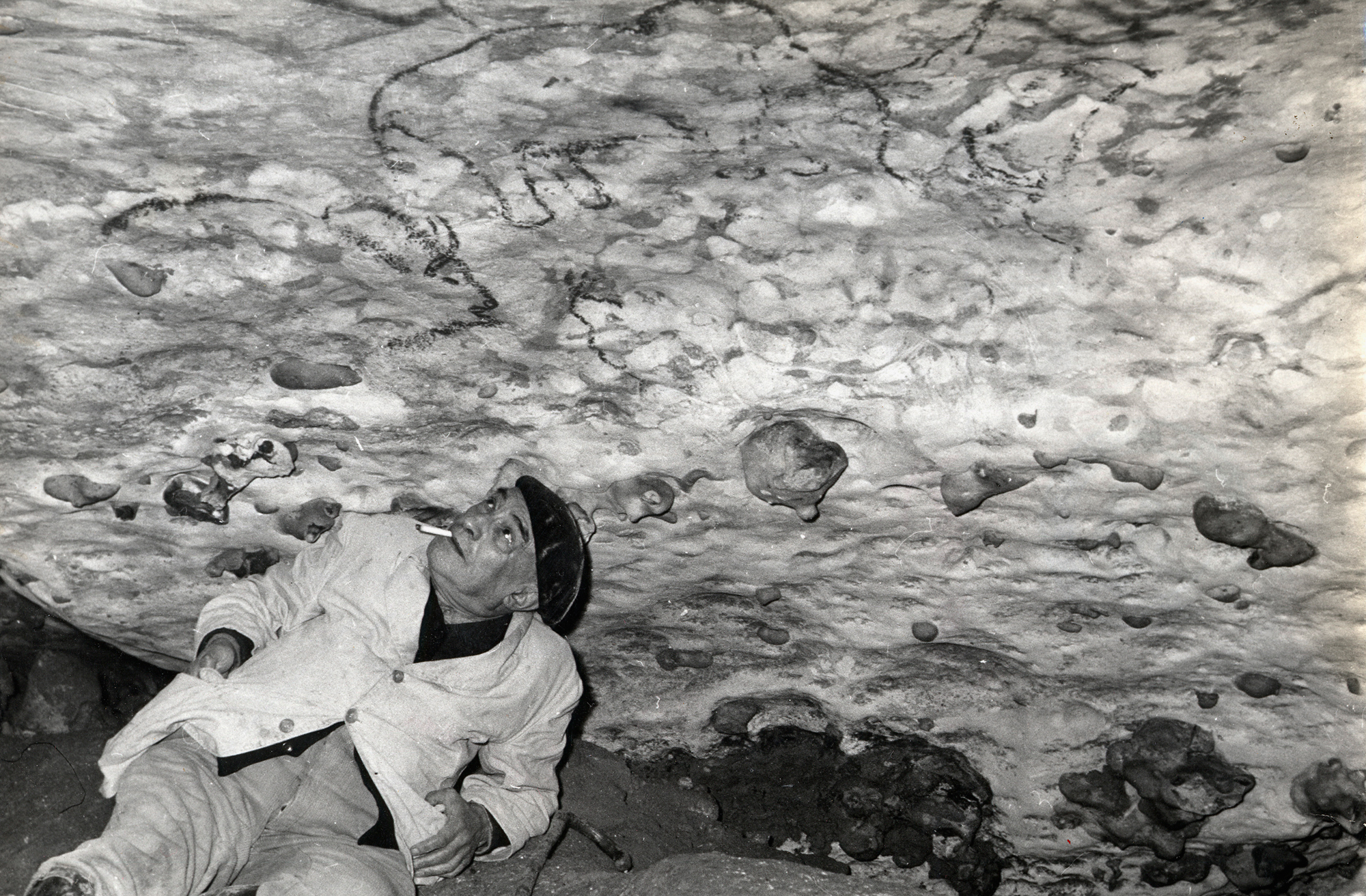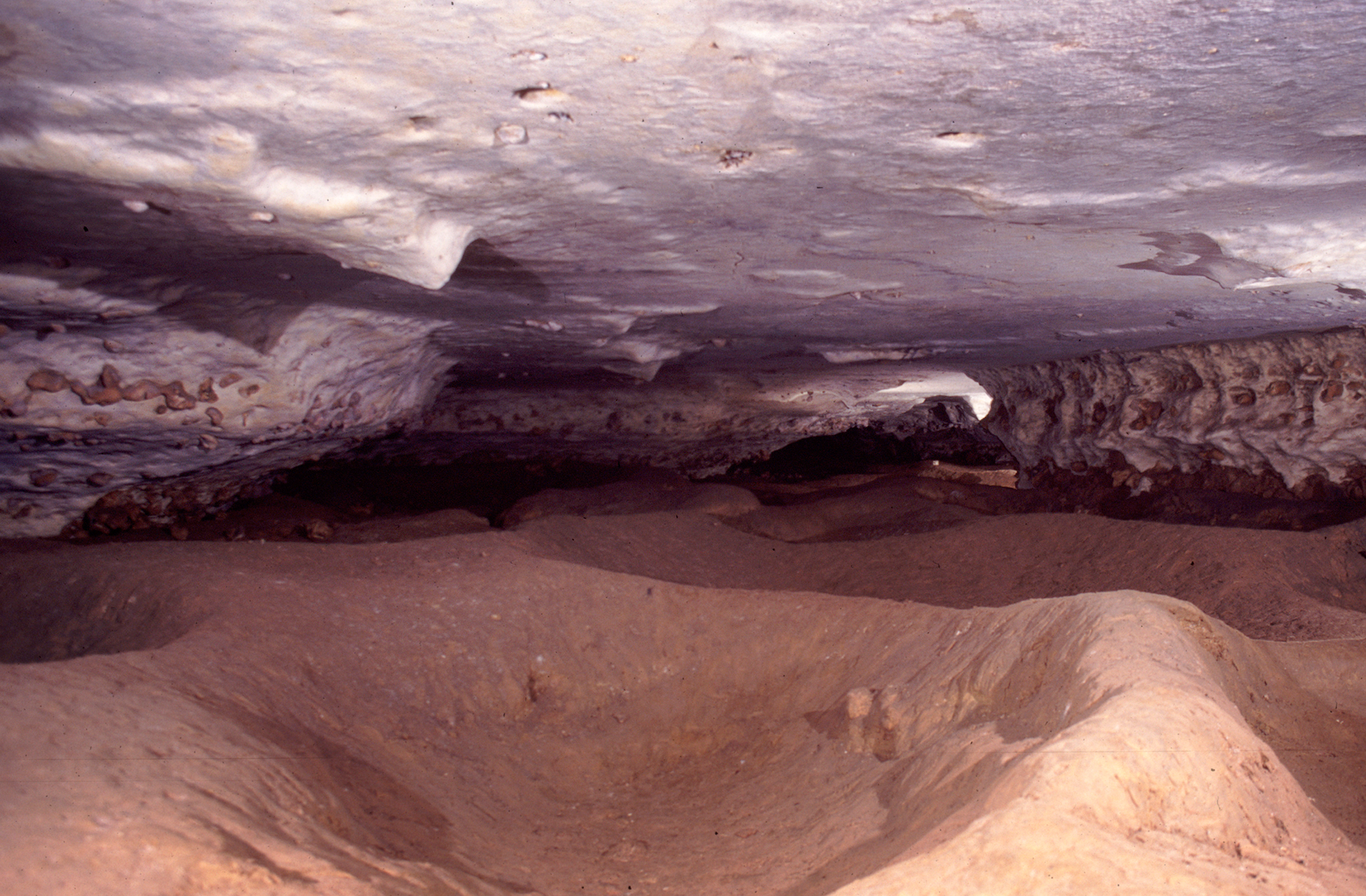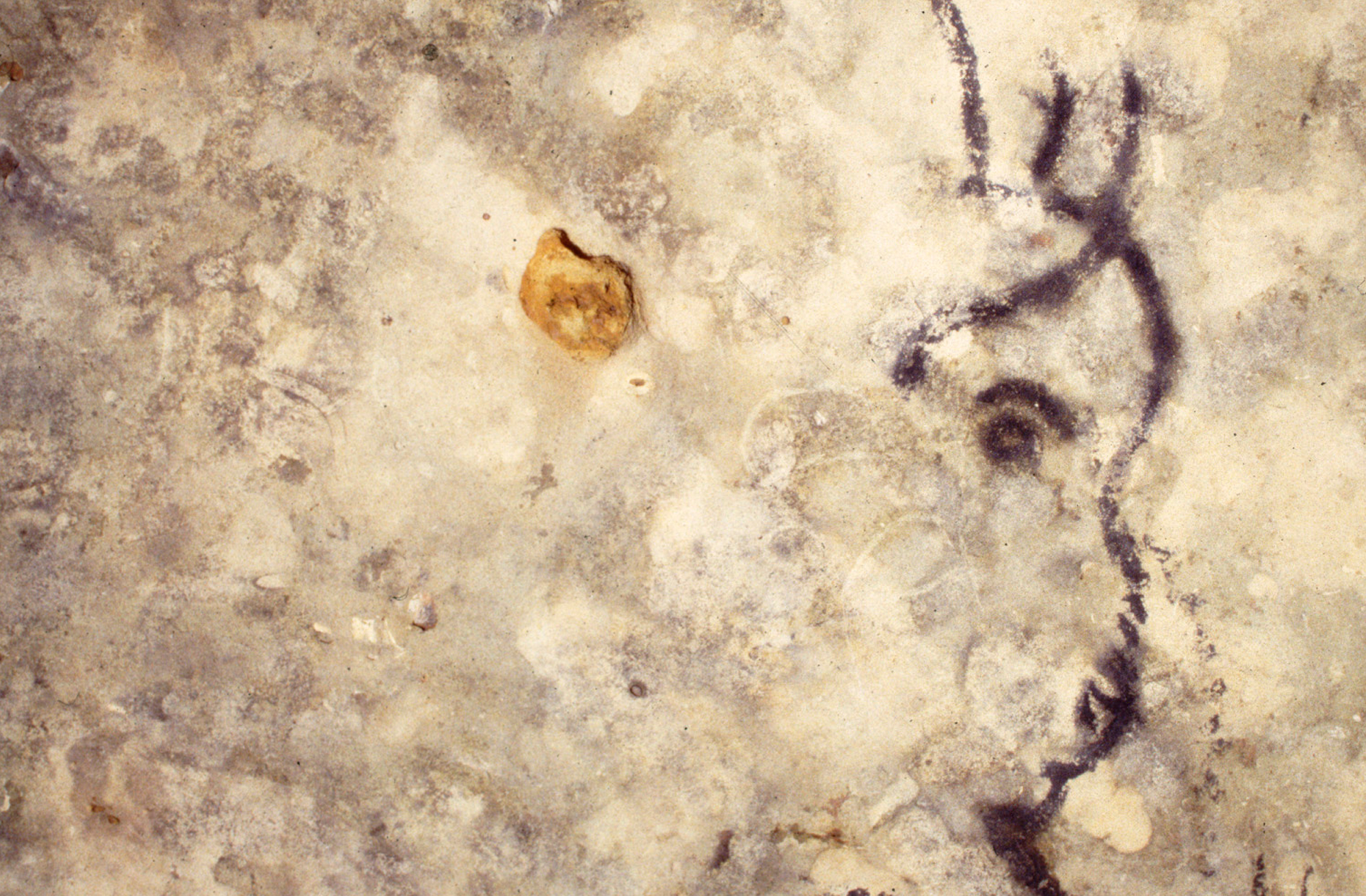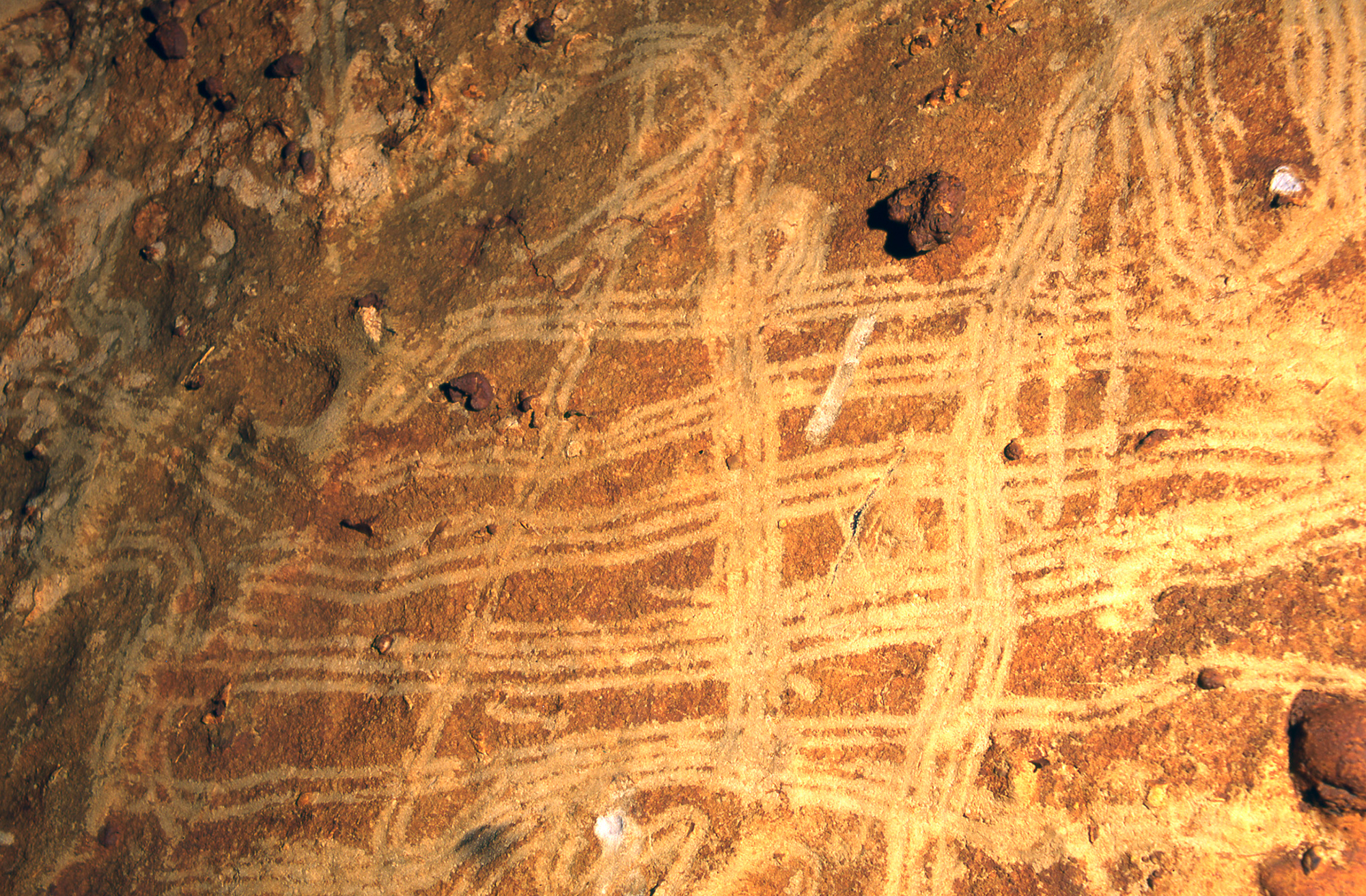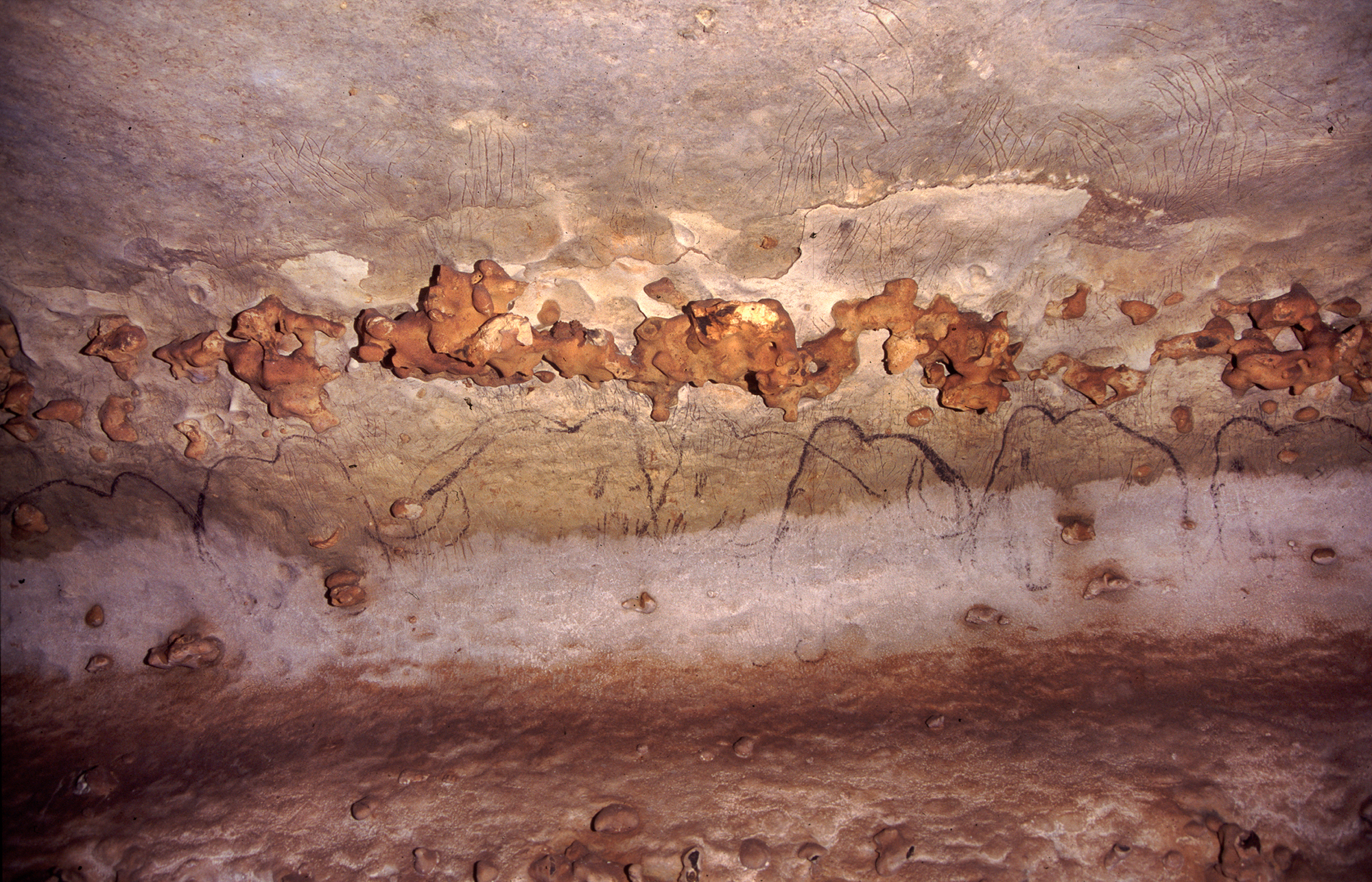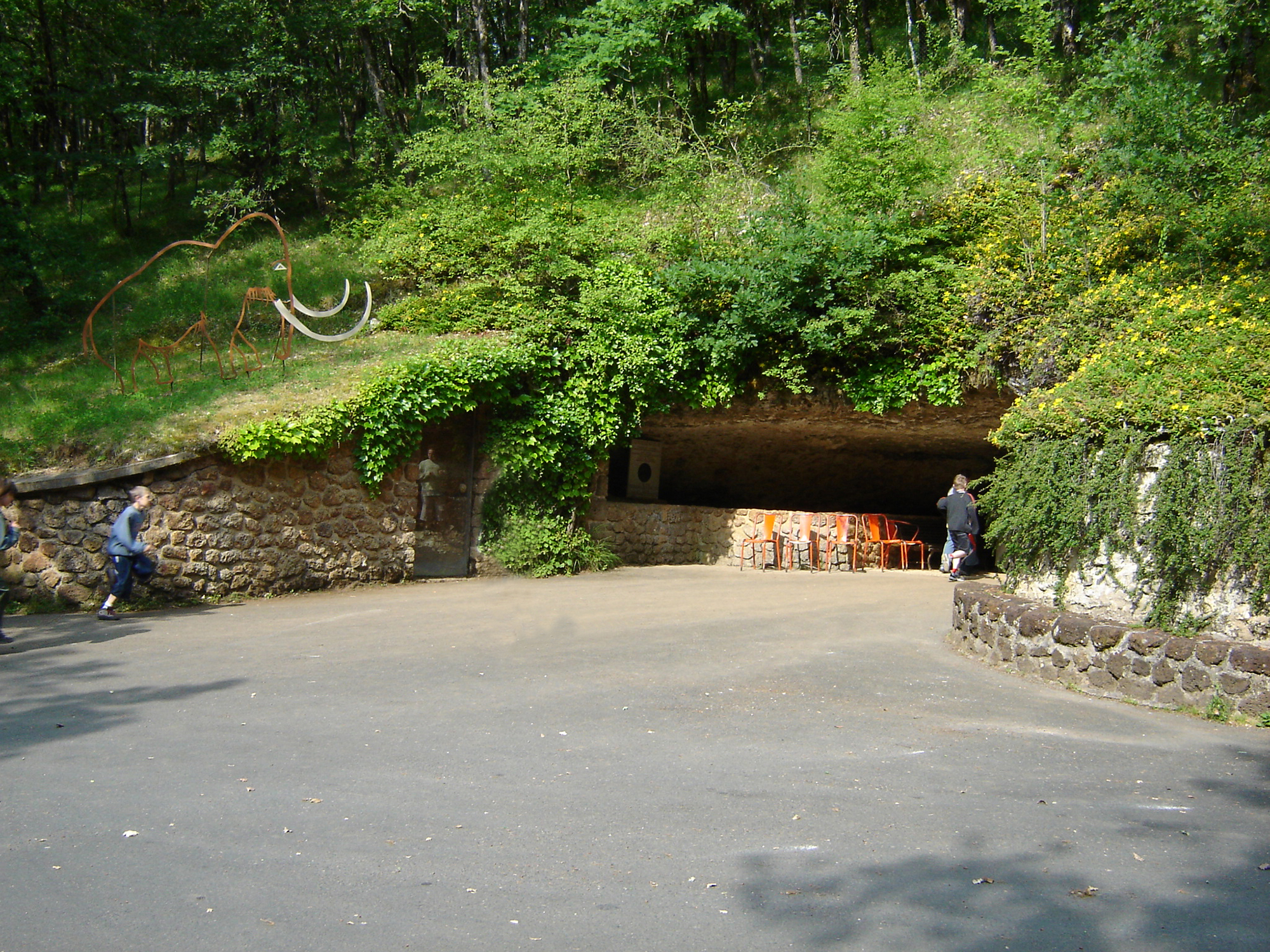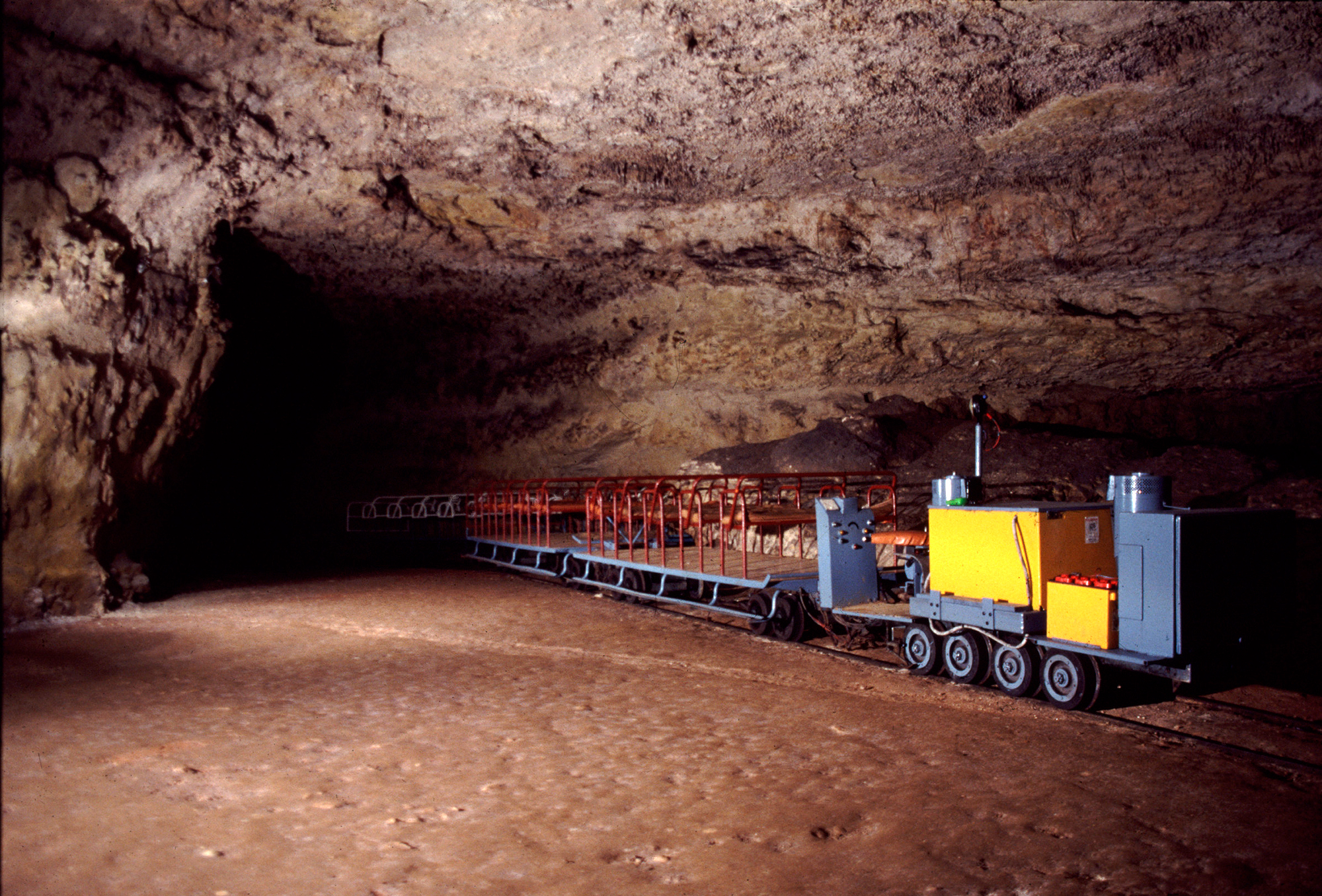
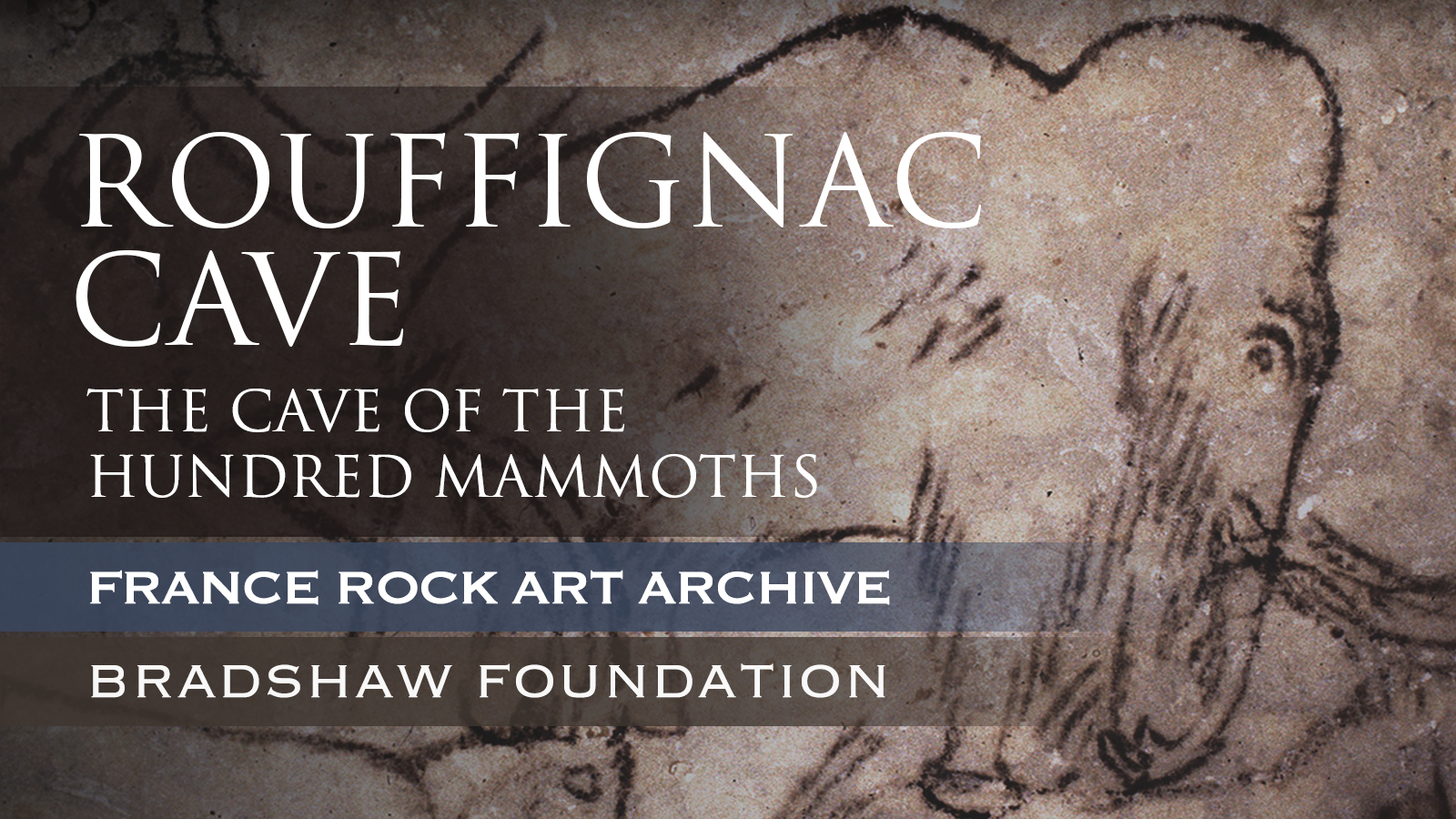
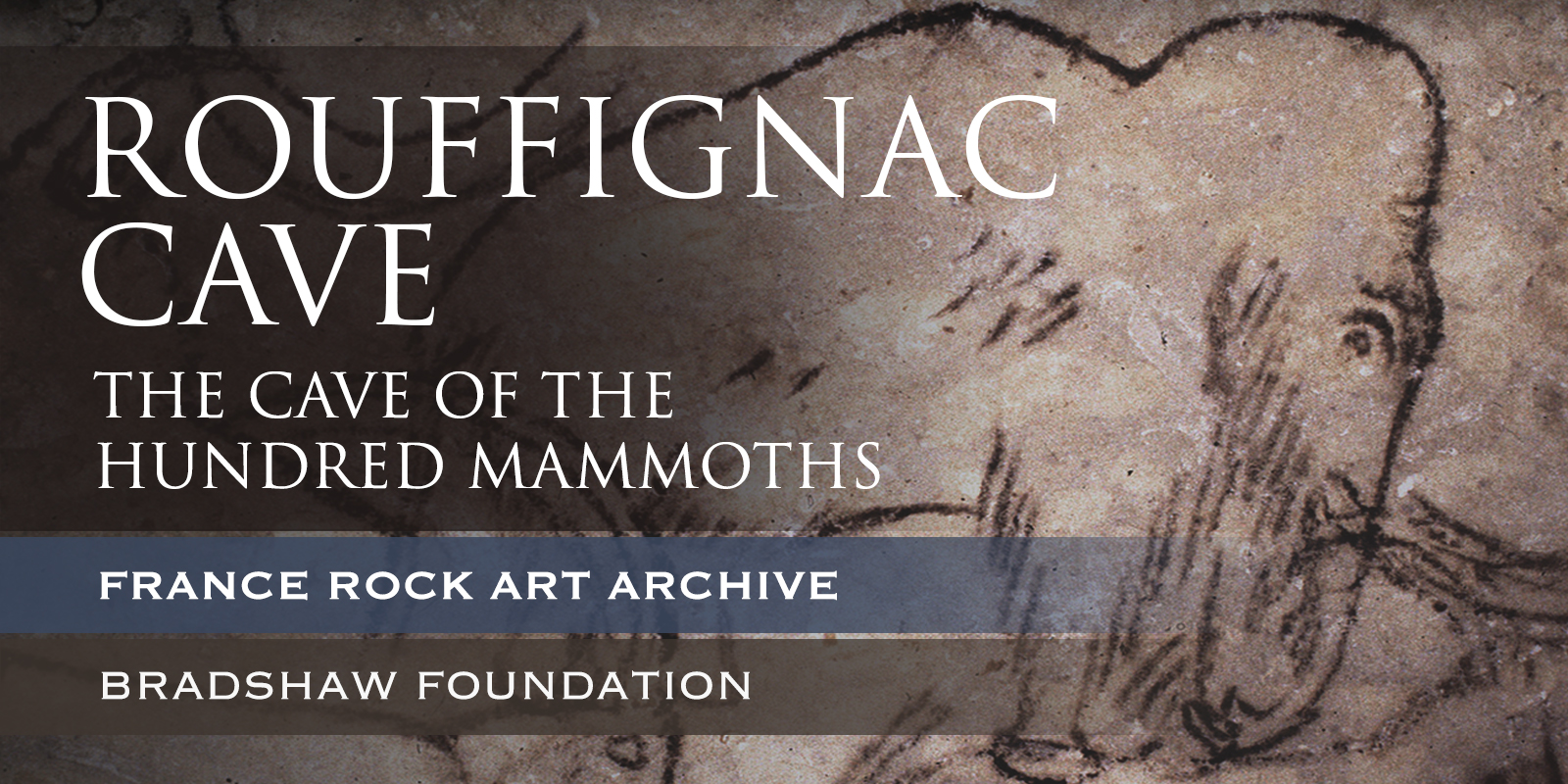
Dr. Jean Clottes comments on this in his publication 'Cave Art' - from the cave mouth to the furthest decorated chamber, it takes 45 minutes to walk; with reduced oxygen and under flickering torch light, this fact is significant. It contains over 250 engravings and cave paintings and drawings, dating back to the Upper Paleolithic. Rouffignac Cave, also known as The Cave of the Hundred Mammoths, has the most extensive cave system of the Périgord with more than 8 kilometers of underground passage ways.
It was made a UNESCO World Heritage site in 1979.
It is an impressive cave - vast and slowly descending, and in the ambient light it appears to be the size of a motorway tunnel, smoothly sculpted by water over time. Impressive intermittent panels of black drawings and engravings gradually move from the walls to the ceiling as the cave ceiling lowers, whilst on the floor there are tessellating hollows of cave bear pits once used for hibernation, until the end of the cave is finally reached, where a dizzying display of drawings including woolly rhinoceroses, mammoths, horses, bison and ibex adorns the ceiling; a prehistoric Sistine Chapel. Like Michelangelo, these would have been drawn by the Palaeolithic artists lying down.
The French cave of Rouffignac cave is located in the Dordogne near Rouffignac-Saint-Cernin-de-Reillac and Les Eyzies-de-Tayac. This extensive cave network is situated on a forested limestone plateau, with its three entrances in the Labinche valley. The entrance today is almost certainly the one used during the Palaeolithic.
→ Plan of the Rouffignac Cave network
The Rouffignac cave has been known of since the fifteenth century, when clay was extracted from it. The writer and traveller François Belleforest describes in 1575 the 'paintings in several places as well as the trace or footprints of various kinds of large and small beasts.'
At the end of the 1940's, a group of cavers explored the galleries and noticed several images, but they didn’t realise these images were Palaeolithic. On 26th June 1956, Romain Robert, Louis-René Nougier, with Charles and Louis Plassard visited the cave and realised the archaeological value of the site.
Then abbé Henri Breuil authenticated the images as Palaeolithic works on 17th July 1956. The authenticity of the parietal works was then challenged by the prehistorian Severin Blanc - 'pale copies, made to smoke' - but an international commission dismissed this, so ending 'The War of the Mammoths' and a full inventory and excavations were undertaken. In 1957 Rouffignac became a listed site.
The Rouffignac cave network is the largest limestone karst system of Périgord, with roughly 10 km of cavities spread over 3 levels. The limestone mass is from the late Cretaceous, between 90-100 million years ago. The formation of the galleries occurred during the Tertiary, and the cave was then dry for two to three millions years. There has been little change since the Palaeolithic. The floor of the cave is covered with clay, with rock fragments from the ceiling. The walls are inlaid with flint nodules randomly protruding and often defining the decorated areas.
Several species of bears have occupied the cave of Rouffignac prior to human activity. They left three types of visible traces: vertical streaks of bear scratches on the walls, hollows for hibernation on the floors, and fossil bones.
The rock art of Rouffignac is 13,000 years old, from the Magdalenian culture. The painted and engraved drawings are distributed in most of the galleries of the upper floor, but their density varies across sectors. Today, the public visiting areas are where their concentration is greatest.
Two methods were used by the Magdalenian artists to adorn the walls, according to the rock texture. For the drawings, pieces of manganese dioxide were used, forming black figures on the clear rock. For the engravings, they have used flint chisels, bone or wood tools. If the rock was soft, they simply used their fingers.
Prehistorians have documented 255 figurative representations in the cave. There are further non-figurative representations. Mammoths represent over 60% of the figures in the cave. There are also bison, horses, ibex and rhinos, providing a specific guide to the fauna of 13,000 years ago. Geometric signs (5.5%) such as roof-like tectiforms are present, numbering 14. Finger tracings that form the 'macaroni' tangle of serpentine lines cover roughly 500 square metres.
Most of the figures are located on the top level. The Henri Breuil gallery is dominated by the Frieze of Three Woolly Rhinos and the Frieze of Ten Mammoths. The Sacred Way to the Great Ceiling is most complex, with engravings on the walls at the beginning and then drawings on the ceiling. The Great ceiling hangs above a large shaft which allows access to the lower levels. The Great Ceiling demonstrates the greatest diversity of fauna; 65 animals intertwine.
| Representation % of the total number [255]: | ||
| Mammoth | 158 | 62% |
| Bison | 29 | 11.40% |
| Horse | 16 | 6.30% |
| Tectiform | 14 | 5.50% |
| Ibex | 12 | 4.70% |
| Rhino | 11 | 4.10% |
| Snake | 6 | 2.40% |
| Human | 4 | 1.60% |
| Unknown | 4 | 1.60% |
| Bear | 1 | 0.40% |
Rouffignac is notable for its proportion of representations of mammoths engraved or drawn on the walls. The mammoth is in fact relatively rare in Palaeolithic parietal art; Rouffignac’s 158 representations equates to 30 % of the mammoths throughout Palaeolithic art. The style of Rouffignac’s mammoth figures, both drawings and engravings, has a uniformity; the simple flowing line evoking the back, the full detail of the eye, the 'two fingers' extremity of the trunk and the anal flap which protects the animal against the cold climate as on the modern musk-oxen.
No direct dating has been done on the rock art. Based on similarities of style with nearby caves such as Combarelles, Bernifal and Fond de Gaume, researchers have assigned the representations of Rouffignac to the Magdalenian culture, roughly 13,000 years old. The dating by stylistic criteria in this instance includes the sequences of more or less oblique parallel lines that suggest anatomical details and the spatial perspective indicated by the animal’s horns and legs; these characteristics are typical of the Magdalenian period.
Succeeding the Palaeolithic artists, Rouffignac shows evidence of the Mesolithic, from camps established in the cave mouth; fossil bones from fauna and tools of flint and bone. At the end of the Bronze Age, the cave was used as a necropolis; cremations at the cave entrance and ashes deposited in some of the cavities, along with ceramic and bronze offerings.
Visits in Rouffignac cave by the public began in 1959. Today, visitors are taken on an electric train through the silent subterranean labyrinth for a one hour tour. Such an installation makes the site accessible to all, but more importantly provides an essential asset for the preservation of the art; numbers are controlled, as is the lighting.
→ France Rock Art & Cave Paintings Archive
→ Chauvet Cave
→ Lascaux Cave
→ Niaux Cave
→ Cosquer Cave
→ Rouffignac Cave - Cave of the Hundred Mammoths
→ Bison of Tuc D'Audoubert
→ Geometric Signs & Symbols in Rock Art
→ The Paleolithic Cave Art of France
→ Dr Jean Clottes
→ Bradshaw Foundation
→ Rock Art Network
